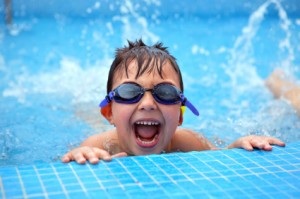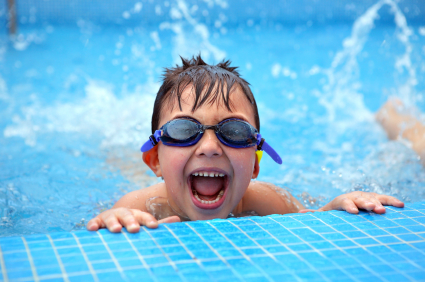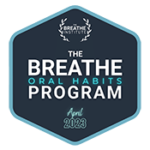Children’s Safety: Swimming
There is perhaps no better summertime activity than going swimming. Whether you frequent a community pool or hit the beach instead, there’s nothing more refreshing than a dip in cool water on a hot day. While a day at the pool is a relaxing activity for most, when you have little ones, being around water can be nerve wracking. Here are some statistics to illustrate the importance of careful poolside practices along with some tips to help you develop safe water habits with your little ones.

The Facts:
Children under the age of 14 are at risk for unintentional drowning. On average, within the United States alone, ten people die from drowning accidents every day. About 1 in 5 of those are children under the age of 14. Children ages 1 to 4 have the highest rate of drowning and, more often than not, these accidents happen in home pools. The greatest factors contributing to these numbers are:
- a child not knowing how to swim
- a home pool being unfenced
- a lack of supervision
- failure to wear an appropriate life jacket or floating device
- alcohol use among supervising adults
Here are some of the most basic and effective ways to ensure that you and your family stay safe whether at the pool or the beach this summer:
Get them into Swim Lessons:
Teaching your child to be comfortable in water is the first step. You’ll need to assess when each child is ready, but getting them in lessons as early as possible is advised. Make sure they know how to tread water and float before allowing them in the water by themselves. Keep them in the shallow end of the pool or in any designated kid’s zones. Make sure that they know not to go in the water unless an adult is present. Or, if they’re a bit older and you feel confident in their abilities, teach them to use the buddy system and always have someone with them while swimming. While it’s important for them to recognize that precautions should be taken, they should also know that water is not something to be afraid of.
If your child has been primarily in pools and is going to a lake or to the ocean for the first time, help educate them on the differences of swimming out in the open. Teach them about currents, undertow, uneven surfaces, etc. to make sure they’re prepared for the differences.
Actively Supervise:
There is nothing more important than making sure your full attention is on your children at all times when they are near or in water. If your children are still infants or toddlers, you shouldn’t be more than an arm’s length away from them. Be sure that you remove any distractions while you’re monitoring children in water so that you can jump in and help immediately if necessary.
Pool parties, while fun, can be some of the most dangerous environments for little swimmers if they are not handled properly. If there are numerous adults around, it’s important to always have at least one adult designated to watching at all times. Don’t make the faulty assumption that someone else is watching your children. Set up a rotation system so that one parent doesn’t get too worn out. This will keep everyone’s eyes fresh and still make sure that the kids always have an active watcher.
Teach About the Dangers of Pools:
While pools may seem harmless enough, it’s important to remember that things such as water jets, drains, and filtration systems can pose a threat to hair and little fingers and toes. Teach your kids to stay away from drains or outlets that may have suction. Anything that could prevent them from being able to come up for air should be avoided. Children’s wading pools or smaller pools with only a singular drain pose the greatest threat for hazardous suction. If you’re installing a hot tub or pool, make sure that the draining systems are compliant with the Pool and Spa Safety Act.
Learn CPR:
Should an accident occur, nothing is more valuable than proper CPR knowledge. Mere minutes can make a huge difference if a child has swallowed water. Local hospitals, fire departments, or community colleges offer CPR classes regularly. Make it a family outing and have the kids learn CPR as well. It is an invaluable tool that could save a life!
If you have a Home Pool:
If you already have a pool in your backyard, make sure that every safety precaution possible is in place. A pool fence should be at least 4 feet high and should have a secure, self-latching gate. This will keep you from having to remember to latch it every time you leave the pool area. If all you have is an inflatable pool, make sure you empty out all water after you’re done using it. Store the pool upside down to ensure there is no water left inside. Whether you have an in ground pool or merely an inflatable one, consider installing an alarm or attaching a bell to all outside doors to monitor children’s whereabouts .
Being aware of the dangers that pools and bodies of water can pose is the first step to achieving safe water practices. Take every precaution to ensure that water-focused playtime can remain carefree. Remember that educating yourself and your children is the most important decision you can make when it comes to maintaining your child’s safety. Put these suggestions into practice to give yourself some peace of mind this summer. Happy swimming!










